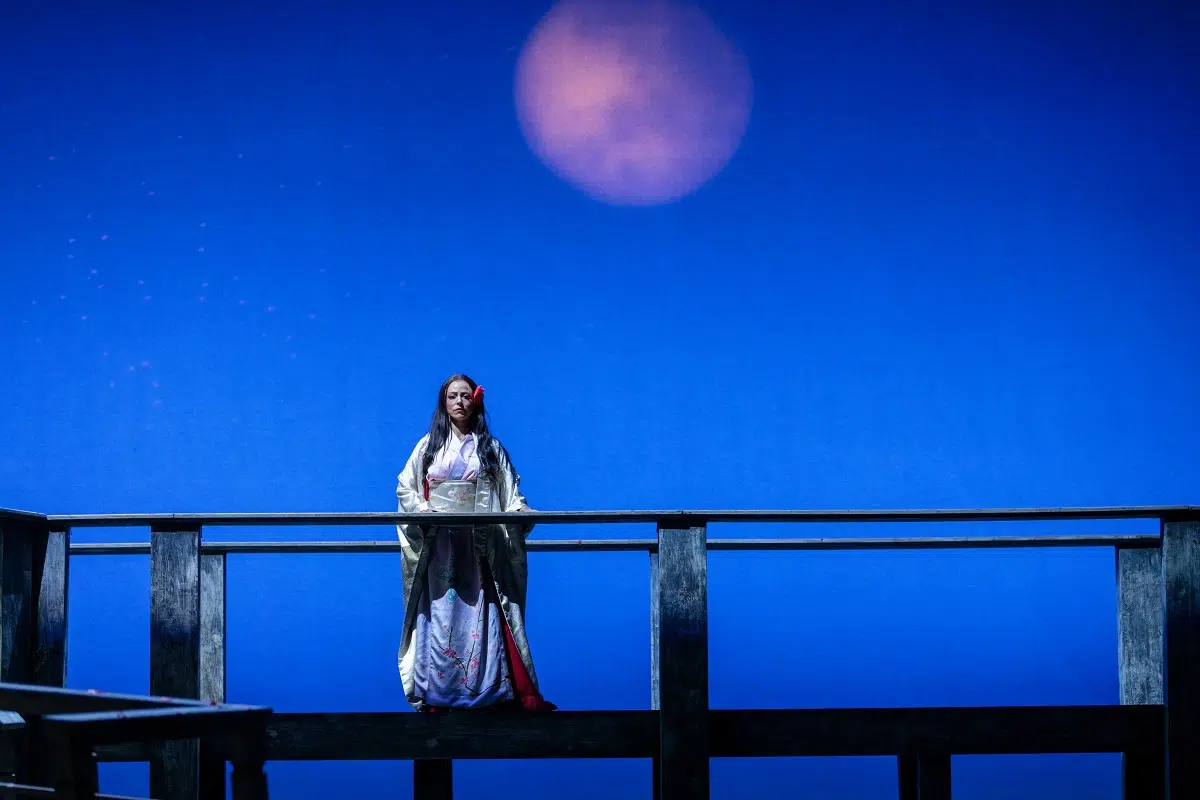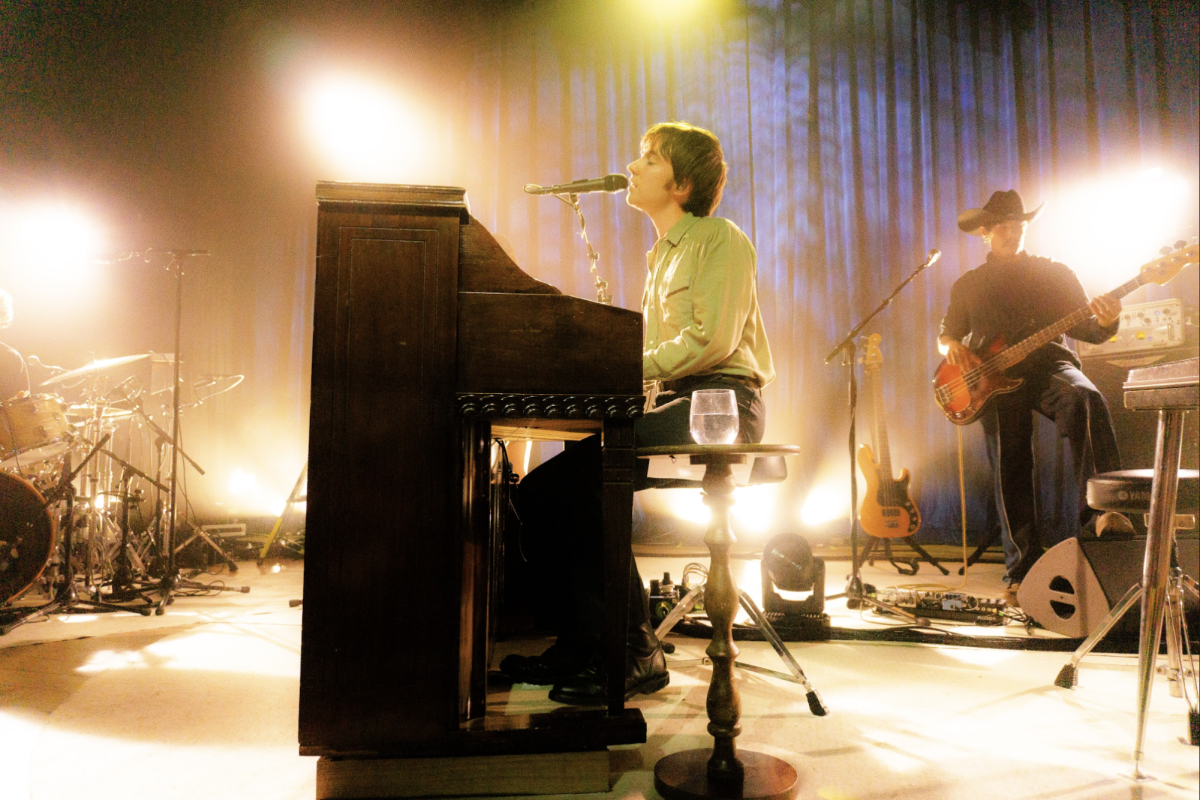As Spring makes its return this year with blooming cherry blossoms, Puccini’s “Madama Butterfly” welcomes its arrival with a haunting yet beautiful display of loss and heartbreak set in the early 1900s of Nagasaki, Japan. The story centers on Cio-Cio San (played by soprano Corinne Winters), a 15-year-old Japanese girl who is married off to Pinkerton (played by tenor Adam Smith), a U.S. naval captain whose poor choices lead him to abandon her. With the set design focused on the house of Cio-Cio San, the stage is adorned with everything from bright cherry blossom petals to melancholy lighting that softly mimics the rise of a new day. To top off the perfection, the San Diego Symphony’s live music, conducted by Yves Abel, combines swelling and touching scores to support a powerful performance that will surely bring tears to your eyes.
Before I stepped into the San Diego Civic Theatre to see “Madama Butterfly,” many of my concerns had not yet been ailed. Not only was this my first opera, but the basic plot summary I had quickly googled beforehand had me worried about many things — and for good reason. Despite knowing that this story was quite dated for contemporary society, I was still concerned about watching a production that featured a young girl being taken advantage of by a much older man, let alone the fact that this girl is a minor. Would the production endorse this, or worse, romanticize it? Moreover, considering that representation is a crucial matter for any production that showcases people of color, what would this production look like by having nearly all white opera singers playing Japanese roles?
It is safe to say that my worries were laid to rest. I was relieved to see that the opera did not try to conform to being “authentic” to Japan, focusing only on the fact that it took place in Nagasaki and avoiding any use of the Japanese language in the dialogue. The story also maintained its criticism of American imperialism, advocating that Pinkerton was the villain rather than the hero. The image of Pinkerton love-bombing Cio-Cio San and taking advantage of her innocence right before turning around and throwing her away is the near-perfect representation of colonialism, symbolizing how easily Western powers take advantage of colonies before leaving them in shambles. What’s even more exciting is to see how Cio-Cio San displays her sheer passion and strength by taking the reins of her life and choosing her path despite what others around her say. Even while her family members and closest friends outright shame her for thinking that her American husband will return one day, Cio-Cio San remains headstrong in her beliefs and reminds the audience of what love can do to an innocent, young soul like hers. Sure, one can argue that the choices she makes are not the most logical ones (i.e. waiting three years for a man who could care less about her), but the tragedy of her circumstances is what makes the audience adore her. She is full of life throughout the production and sees hope even when everything around her is bleak. My favorite moment, in particular, was during “Scuoti quella fronda di ciliegio” (The Flower Duet), when Cio-Cio San and her maid, Suzuki (played by mezzo-soprano Stephanie Doche), await Pinkerton’s arrival with hope as they scatter cherry blossoms around their home. It was breathtaking to watch the pink petals rain down as the two women sang — a scene that I wish I could watch over and over again.
Even while leaving the theater, I yearned for more. The show filled me with laughs and tears, making my first opera an unforgettable and special experience that will surely not be my last. I hope that more young audiences will occupy the theaters of upcoming operas and get to experience something like this, and the legacy of “Madama Butterfly” continues even after the last of the cherry blossom petals fall.
Image courtesy of SDopera









